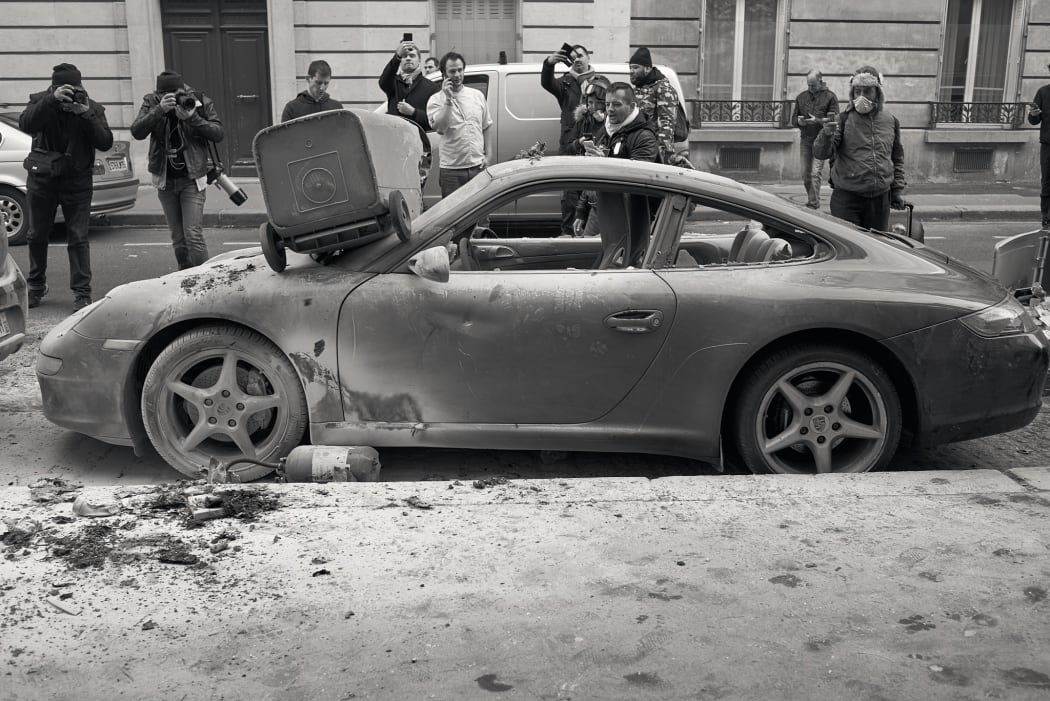
Documentary photography
Documentary Photography is an umbrella term encapsulating a wide range of approaches, however the term usually refers to art which captures a real moment, conveying a message about the world. As opposed to photojournalism, which concentrates on breaking news events, it typically focusses on an ongoing issue or story seen through a series of photographs, drawing attention to difficult or dangerous world issues which require some form of remedial or political action.
Early examples
Some of the earliest examples of documentary photography can be seen in the work of British photographer Philip Delamotte, who recorded the disassembly of Crystal Palace in 1852 and the American Matthew Brady, who documented the American civil war in 1861. In Scotland, David Octavius Hill and Robert Adamson photographed aspects of Scottish society including the fisherfolk in Newhaven. American journalist and police reporter Jacob Riis made important records of poverty in New York as seen in his publication, How the Other Half Lives, 1890.
At the turn of the twentieth century photographers including Dorothea Lange and Walker Evans captured powerful images of American society and the number of magazines printing such photographs increased, including LIFE, TIME and Vanity Fair. The camera increasingly became a tool for social change, with artists exploring its powerful potential for leading to reform, in a style often referred to as ‘social documentary photography’. Alfred Stieglitz is regarded as a pioneer in the social documentary, producing candid street photography such as Steerage, 1907.
Documentary photography during and after the two world wars
With the outbreak of the First World War artists increasingly focussed on photography’s ability to record the horrors happening around the world. The Metropolitain Museum in New York wrote:
‘The inherent violence of the war soon engendered a new commitment by the world’s photographers to document every aspect of the fighting, from life in the trenches to views of fighter planes cruising the skies. Nothing was left hidden from the camera’s burrowing eye.’
In the mid-1920s German artist August Sander began working on his ambitious, broad ranging photographic project People of the 20th Century, photographing a cross section of society, including Handlanger (Bricklayer), 1928. Today his project is seen as a powerful document of Germany in the inter-war period, ranging from images of persecuted Jews, rich bohemians, Nazi soldiers and circus performers.
During and after the Second World War photography continued to be a powerful tool for artists. The intrepid American artist Lee Miller worked as a war artist and photojournalist during and after the war, documenting Henry Moore sketching people hiding in the London underground and publishing the photographic book Grim Glory: Pictures of Britain under Fire, 1941. After the end of the war Miller tracked down her artist friends who were still alive, documenting them alongside their surviving artworks, such as Jean Arp, Switzerland, 1947 and Paul Delvaux, Brussels, 1944. She also accompanied American troops into liberated concentration camps in Germany and made harrowing documents of the atrocities she witnessed.
Following the Second World War Henri Cartier-Bresson, Robert Capa, George Rodger and David ‘Chim’ Seymour founded the Magnum photographic agency, originally set up to document the realities of post-war life, with important members including Eve Arnold and Stuart Franklin.
Contemporary photography
The rise of television reportage and digital technology in the twenty-first century has meant less need for published documentary photography. Many artists working with the style today raise questions about the role of the document, and explore the boundaries between fact and fiction. American photographer Diane Arbus’ atmospheric and haunting portraits capture people from across society, with a focus on marginalised figures. British photographer Don McCullin was drawn to the victims affected by conflict, including shell shocked soldiers during and after the Vietnam War and his harrowing portrait of a starving child in Biafra, 1968.
"Documentary Photography" by National Galleries of Scotland is licensed under CC BY-NC-SA 4.0. You can read the original article here.